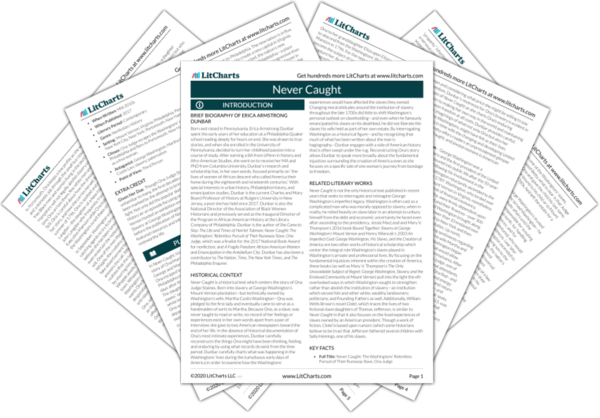The Washingtons’ return to Mount Vernon is, for George and Martha, a respite from the strenuous demands of public life and a chance to rest after the illnesses that have plagued their home. For Ona, however, the trip holds a very different meaning: having been changed by the things she’s seen and done, returning home is less of a chance to rest and more of a confrontation with the two very different worlds of which she’s now a part.
